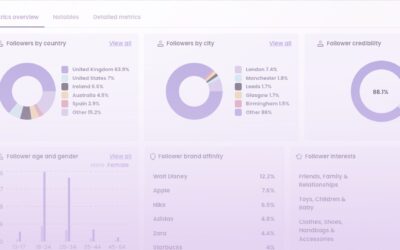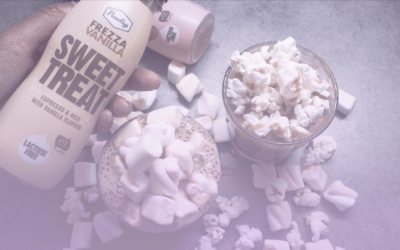Influencer marketing is one of the fastest-growing fields of marketing: from $8 billion in 2020, the industry has now grown to 21.1 billion dollars. So if you aren’t using influencers for your brand yet, you are missing out. Here’s a full guide to influencer marketing – from crafting your strategy to measuring results! ✨
2. Main reasons to use influencer marketing
3. Crafting your influencer marketing strategy
4. Finding influencers for your brand
5. Choosing the right influencers for your brand
6. Different types of influencers
7. Different types of collaborations
8. Writing an influencer campaign brief
9. Setting goals and KPI-s in influencer marketing
10. Measuring influencer marketing success
Introduction to influencer marketing
Influencer marketing goes hand in hand with two other fields of marketing: social media and content marketing. As the name suggests, influencer marketing uses social media users with a big audience to promote brands’ products and services. Influencer marketing relies on influencers’ recommendations and, therefore, is leveraging word-of-mouth marketing.
As influencers are found in very different areas, they are a great way to reach a specific target group. There are many so-called lifestyle influencers who share the full spectrum of their lives on social media, but there are also content creators who only talk about a specific field, such as sports or food.
The most influential channel of influencer marketing is Instagram, with both feed and story posts. In most cases, an influencer takes a picture or creates a video of a brand’s product/service, shares it on their profile, and receives a reward from the brand in products or money.

Iiris-Simona Rao (@iirissimonarao) x Wolt Estonia campaign photo
5 reasons to use influencer marketing
🤍 It’s more trustworthy than traditional advertising
Traditional advertising methods often struggle to establish genuine connections with audiences. Influencer marketing, however, relies on the authentic voice of influencers who have already cultivated trust with their followers. When an influencer promotes a product or service, their endorsement feels more like a personal recommendation rather than a traditional advertisement, making it more likely to resonate with and influence their audience.
92% of consumers around the world say they trust earned media, such as recommendations from friends and family, above all other forms of advertising. This is the main reason why influencer marketing works.
🤍 Precisely targeted reach
Influencers come in various niches and have diverse follower demographics. This diversity allows businesses to tailor their marketing efforts to specific target audiences.
Whether your brand caters to fitness enthusiasts, beauty lovers, tech-savvy individuals, or any other niche, there’s likely an influencer whose followers align with your ideal customer profile. This targeted approach ensures that your marketing messages reach the right people, increasing the likelihood of engagement and conversion.
🤍 Great return on investment
A study conducted by Tomson showed that influencer marketing could bring back every dollar invested by 6.5 times – not to mention the positive impact on the brand image! Although the exact ROI can be very different for different brands and different campaigns, there are many reasons why influencer marketing works well for most B2C brands.
🤍 Avoid the ad blockers
42.7% of internet users globally use ad blockers – which means that while the number of users is growing rapidly, the effectiveness of banner and display advertising is decreasing.
While most social media platforms are moving towards people seeing more friends’ posts, and fewer branded posts. This has led to higher competition for the ad space, which has led to higher click prices – and the higher the prices are in the regular digital media channels (including social media), the more it makes sense for brands to invest in influencer marketing.
🤍 Authentic yet professional content
Influencers are skilled content creators who understand the preferences and interests of their followers. Collaborating with influencers opens the door to a wealth of creative content that aligns with current trends and resonates with the target audience.
Many brands use influencer content on their social media channels: it’s authentic yet of higher quality than regular user-generated content. Here are some examples!

Michelle-Cathlin Damm Jarlby (@michellejarlby) x Normal DK campaign photo

Matlan Thihlum (@matlanthihlum) x Zilver Jewellery campaign photo
Crafting your influencer marketing strategy
However, resultful influencer marketing requires a thoughtful and strategic approach to ensure that campaigns align with brand objectives. Here are the essential steps to craft an effective influencer marketing strategy that drives results:
1. Define your goals. Whether you aim to increase brand awareness, drive website traffic, boost sales, or engage with a new audience, having well-defined goals will shape the rest of your strategy. Knowing your goals will help you choose the right influencers, and measure the success of your campaigns.
2. Know your target group. Consider the demographics, interests, and behaviors of your ideal customers. Collaborating with influencers whose audience matches your target group ensures that your message reaches the right people.
3. Choose your KPIs (key performance indicators). Track key metrics such as engagement, reach, conversions, and return on investment. Use the data to evaluate the success of your campaign against your initial goals and identify areas for improvement.
Once these aspects are in place; you can start working on your influencer marketing strategy in more detail: what kind of content creators you want to involve, how many, what kind of content and how often the influencers should share, and what your influencer marketing budget will look like.
Before selecting the right influencers, it is worth defining for yourself the criteria on which basis you evaluate potential partners. For example, it is worth considering the engagement rate, the suitability of the audience, the interests and values of the influencer, the quality of the photos and captions so far.
It is also worth thinking about the time perspective in terms of strategy. While short-term collaborations are a good way to achieve strong visibility on social media in the short term (for example, before the peak season), long-term influencer partnerships work better in the long run: they are more credible, more convenient for both parties, and require less time.
Since a well-thought-out strategy is one of the most important aspects of successful campaigns, we’ve put together an influencer marketing strategy worksheet that you can download and use as a guide!
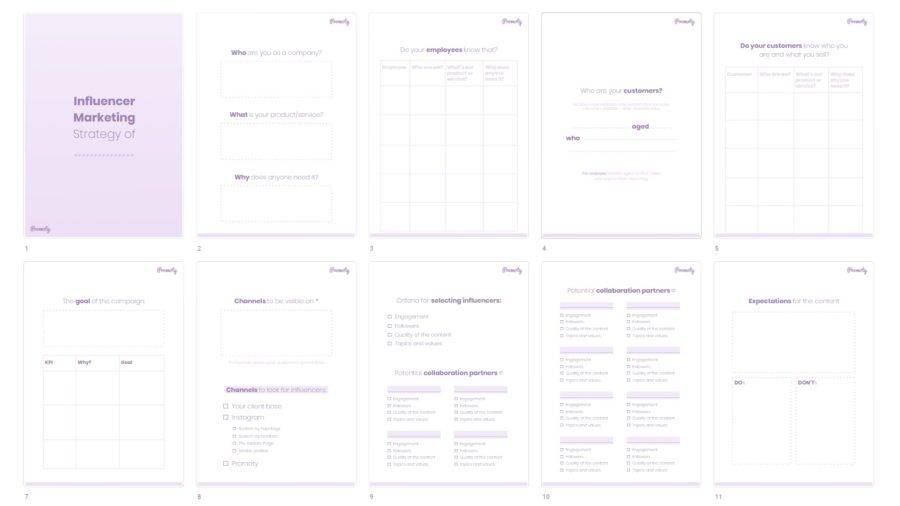
Finding the right influencers for your brand
There are several ways to find influencers. You can start with your own customers and social media followers, browse social media, or use specific influencer search tools.
a) Your existing customers and social media followers
You probably want to find influencers who actually use your products or services and are willing to sincerely recommend them to their followers.
Therefore, you are most likely to find these creators in your customer base! In addition, you can check your social media accounts: who are the people who tag you in their posts or stories and already recommend your brand to their acquaintances? If they have the right audience, you probably want to work with them.
b) Manually by scrolling on social media
Alternatively, you can check different keywords, hashtags and locations related to the brand. If you want to reach content creators in a particular country, you may want to look for posts made in towns in that specific country and hashtags #advertising, #influencer, etc. in the local language.
In fact, finding influencers is slightly different on every social media channel. Fortunately, we have written step-by-step guides on each channel:
• How to find influencers on Instagram?
• How to find influencers on TikTok?
• How to find influencers on YouTube?
c) Using influencer search tool
Finding the right influencers manually is heavily time-consuming – when launching Promoty, it took us more than 40 hours to find 100 relevant creators 🤯
This is also one of the reasons why we created Promoty. Our influencer search tool makes finding TikTok, Instagram, and YouTube influencers a lot faster and easier. We have a global influencer database that you can filter by influencers’ location, their audience location, age and gender; interests, brand affinity, and other criteria.
For example, if you’re searching for influencers based in South Africa, you can set the influencer’s location to SA. If you’re searching for influencers with a South African audience, you can filter our database by the influencer’s audience.
d) Influencers reach out to the brand
Of course, sometimes influencers reach out to your brand themselves. In this case, you should evaluate the letter to see if they really want to work with you – and also, check their previous content, topics they talk about, audience demographics, and other metrics.
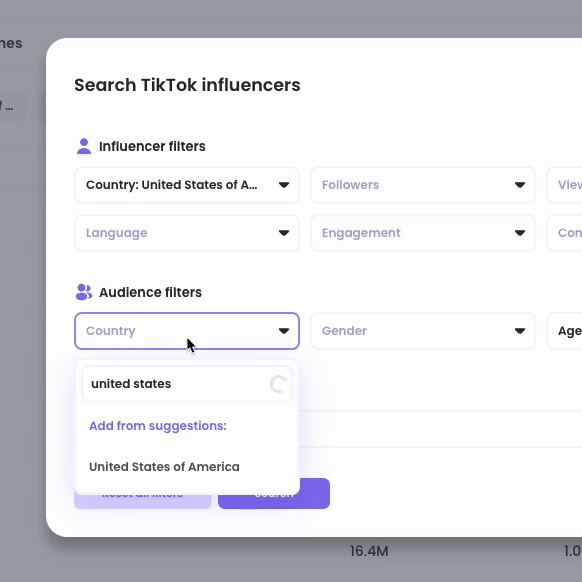
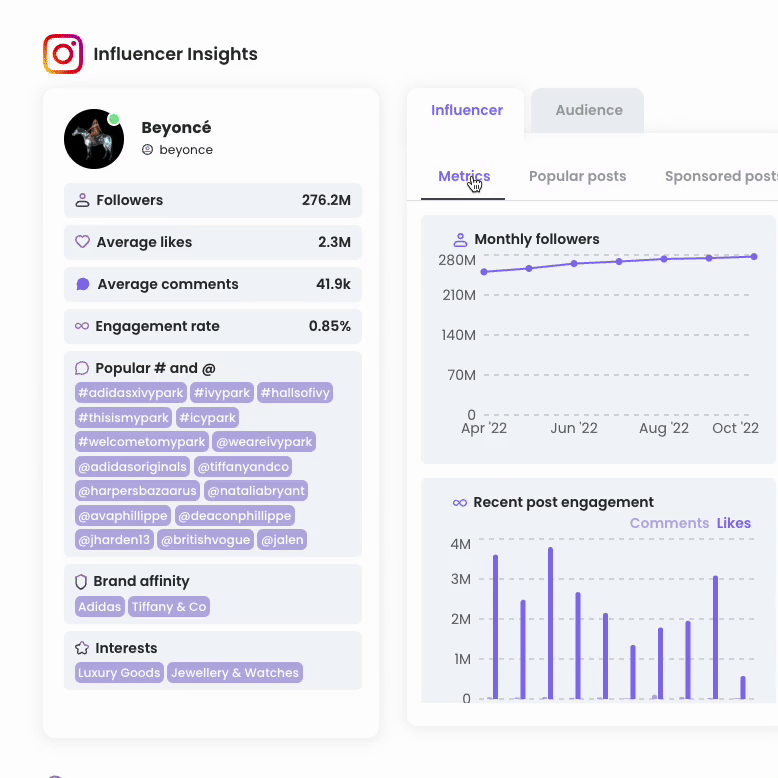
Influencer search and influencer analytics on Promoty
Choosing the right influencers for your brand
Choosing influencers is the biggest factor in the success of a campaign: if a brand finds content creators who fit their brand and whose audience matches the brand’s target audience, the campaign is likely to be successful. Here are five things to check before approving your collaboration!
a) Influencer’s story, topics and values
It’s definitely worth checking out what the content creator has talked about on his account before and how it overlaps with the brand’s themes: for example, if a content creator has previously emphasized the importance of clean food on their account or shared some tricks of an environmentally friendly lifestyle, they are likely to be great for an eco-product campaign.
When applying for a campaign on Promoty, influencers also include a short note about why they want to participate in the campaign – this often shows how well the content creator would fit for the campaign.
b) Quality of the content
If you want to use the photos created by the influencer on your social media channels later, you should first determine if the visual style of a particular content creator is right for you.
For example, if all the previous photos of the content creator were taken with a phone and in dark tones, you shouldn’t expect your collaborative post to come out in light tones and very good quality. If the brand is waiting for photos with a certain style, it is definitely worth mentioning it in the campaign briefing.
c) Previous collaborations
It is also worth taking a look at the number, content and style of influencer’s collaborative posts so far. The fewer paid posts on a content creator’s profile, the more carefully they are likely to choose their partners, and the more authentic content you can expect. In addition, it is worthwhile to make sure whether your potential partner has previously collaborated with competing brands.
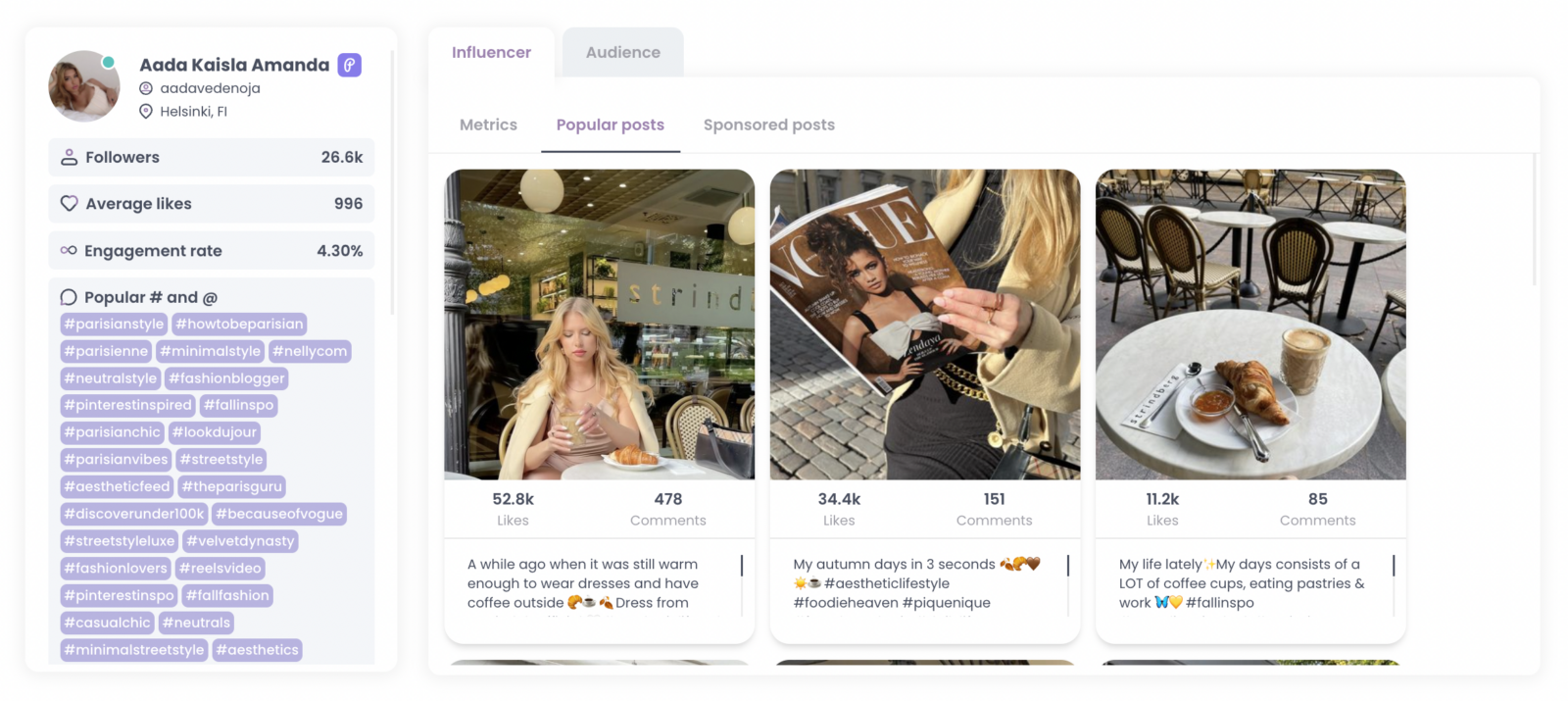
Influencer account insights (including previous posts) on Promoty Discovery
d) Followers’ number and engagement
Although the number of followers is important, it’s not the main thing – as already mentioned, micro-influencers have often higher engagement, lower prices, and thus, higher ROI.
In addition to the number of followers, you should check the average reach and the engagement rate of an influencer. It shows how many followers like, comment, save, or share the content creator’s post. If the creator’s engagement rate is high, it means that the creator’s content matters to his followers, and they actively communicate with him.
At the same time, it is worth keeping in mind that the higher the number of followers, the lower the engagement – in general, 3-5% engagement is normal for big influencers.
e) The quality of the followers
Don’t forget to check for fake followers! In addition to the engagement rate, you can also take a look at the comments under the influencer’s posts: this is usually a good indicator of whether these are by sincere fans or bot comments in the style of “Cool post, check out my content.”
If you are marketing to specific countries or cities, it is also important to ensure that the influencer’s audience is based there – otherwise, the collaboration will bring many results.
If you want a good overview of the followers’ demographics (location, age, gender, etc.), you can ask the influencer to send a screenshot of their Audience view or use an influencer analytics tool such as Promoty.
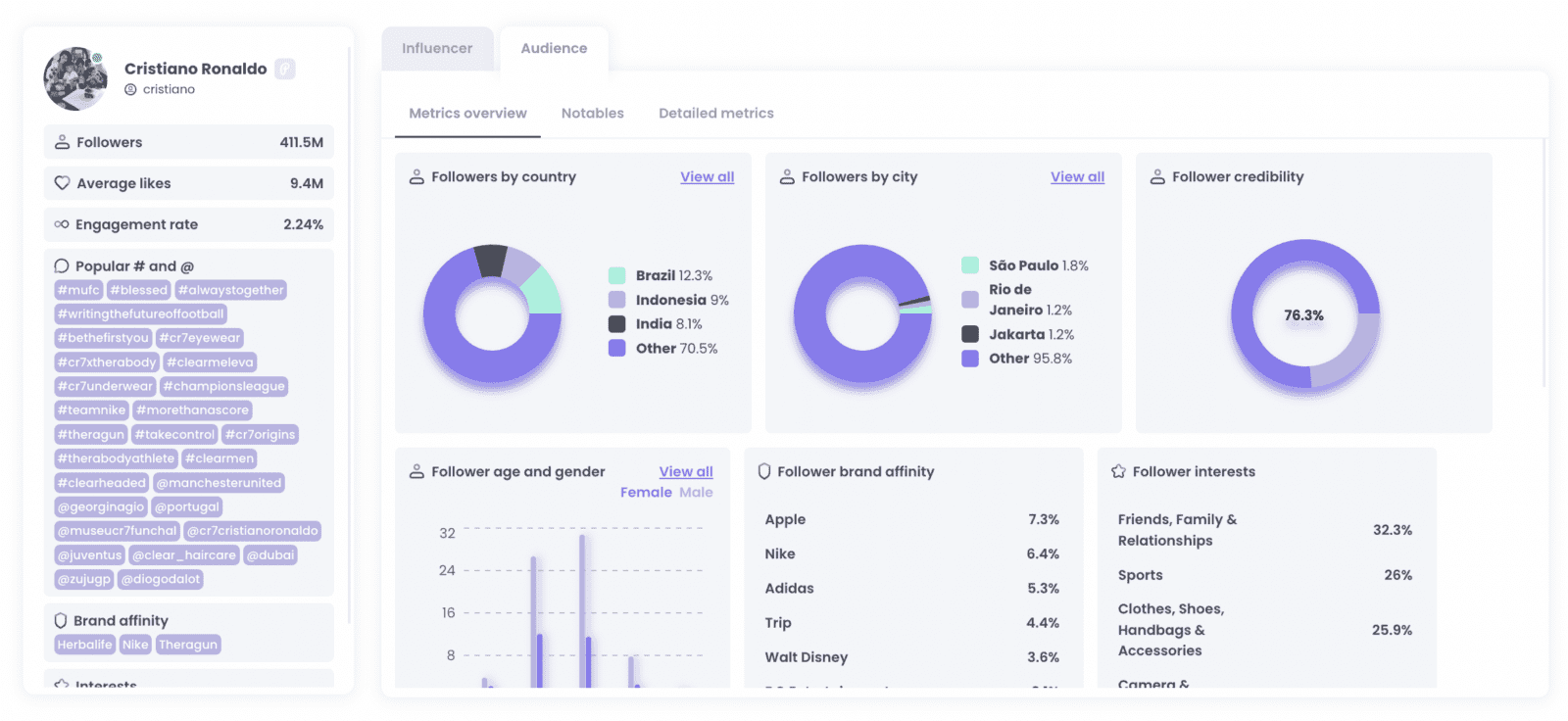
Instagram, TikTok and YouTube influencer analytics tool
Different types of influencers
Here’s a brief overview of different types of influencers, ranging from mega-celebrities to micro-influencers, helping you navigate the vast influencer ecosystem for your brand’s success.!
• Mega-influencers are the celebrities of the digital world, boasting millions of followers across various social media platforms. These influencers, often celebrities, athletes, or well-known personalities, have a massive reach and can significantly impact brand visibility. While they come with a higher price tag, collaborating with mega-influencers can provide amazing exposure and credibility due to their widespread recognition.
• Macro-influencers typically have follower counts ranging from 100,000 to a few million. They possess a substantial reach while maintaining a more personal connection with their audience compared to mega-influencers.
• Micro-influencers have become increasingly popular for their niche focus and engaged, authentic communities. With follower counts ranging from 1,000 to 100,000, micro-influencers often specialize in specific industries or interests, making them valuable for brands targeting niche markets. Their followers tend to trust their recommendations, resulting in higher engagement rates and authentic brand advocacy.
• Nano-influencers typically have fewer than 1,000 followers. While their reach may be smaller, nano-influencers often have a highly engaged and loyal following. Collaborating with nano-influencers can be cost-effective and provides a more grassroots, community-driven approach to influencer marketing.
• Industry experts and thought leaders may not have millions of followers, but they have a significant impact on their industry. Collaborating with industry experts allows brands to tap into a knowledgeable and engaged audience, gaining credibility within a specific niche.
• Brand ambassadors are long-term partners who have a deep connection with a brand. They go beyond one-time campaigns and actively integrate the brand into their content over an extended period. This type of influencer relationship can build strong brand loyalty and authenticity, as followers witness a genuine, ongoing connection between the influencer and the brand.
• Affiliate influencers receive compensation based on the performance of their promotions, such as the number of clicks, sales, or sign-ups generated through their unique affiliate links. This performance-based model aligns the influencer’s success with the brand’s goals, making it a mutually beneficial partnership.

Mirjam Väljaots’ (@mirjamvaljaots) campaign photo
Different collaboration types in influencer marketing
The most common form of collaboration is sponsored posts or stories on the influencer’s own profile, where the content creator introduces the brand’s products and services to his followers or posts where the product has “accidentally” left in the picture.
• Product testing, reviews and opinions. As influencers are often followed in order to get product recommendations or staying up to date with new products and services, this is one of the most effective forms of collaboration. That’s why influencers are often included in launch campaigns for new products and services! As sharing your personal experience often balances the advertising impression, this type of collaboration can also be supported by promotional codes and other sale strategies.
For the content creator, it tends to be the most convenient to make product reviews in Instagram Story, where he can share his thoughts and opinions a little more freely and for a longer time. In addition, influencers with more than 10,000 followers can add a link directly to the Story by using the “swipe up” option (this is a functionality that’ll soon be accessible to all users).
• Discount codes and other sale strategies. Promotional codes and marked links are a functional and measurable way to increase online store sales. If the code gives a significant discount, the influencer will be happy to share it – it is also valuable for their followers!
Of course, in this case, the content creator should also share his own experience or add something personal – that way, it would not just seem like a so-called “paid” post. For example, if a content creator shares a promotional code for an online beauty store, the collaboration will be more effective if they also share their favorite products from that website – the content will look more natural, followers will receive good recommendations, and the e-store sales revenue will most likely increase.
• Giveaways, where brand products are distributed in collaboration with an influencer. Since this form of collaboration benefits both parties – in addition to conveying the brand message, both the brand and the influencer will receive new followers – influencers may charge less for the post, which makes the giveaway a very cost-effective way to market the brand.
It is also popular to involve influencers to send their followers to the brand’s own giveaway or a consumer game: in this case, the influencer’s task is to explain the rules / content of the game and direct their followers to the brand’s social media account or participate in an offline consumer game.
• Creating content for brand channels. Influencer content is often more emotional, trendy, and social-media-friendly than professionally created content – so many brands work with influencers to get content for their social media! Besides, involving influencers to create content is significantly cheaper than hiring a photographer and a model, renting a studio, and getting all the necessary accessories.
Writing an influencer campaign brief
An influencer campaign brief is a comprehensive document that a brand representative sends to content creators before the collaboration. The briefing usually outlines the campaign’s objectives, schedule, expectations, expected results, and guidelines for creating the content.
A well-put-together campaign briefing helps to ensure that unwanted surprises do not occur and that the result meets the brand’s expectations. If no separate contract is concluded, the campaign brief also fulfills the role of a contract. If the influencer agrees to this in writing, he would have hopefully read the brief thoroughly and is ready to follow the mentioned points.
Based on the experience of more than 3,000 campaigns ran on our platform, we have written down some points that should be mentioned in an influencer campaign brief:
a) Brand and product/service introduction
The beginning of the brief is the place to sell yourself to the influencer and create excitement about the upcoming collaboration. A good tone is to start with a short introduction of the brand: who you are and what you stand for. Brand values are undoubtedly one aspect that an influencer decides whether he wants to work with you!
b) An overview of the campaign and its goals
It is very important to state the purpose of the campaign so that the influencer can write the caption for their post accordingly and make a call to action to their followers according to that purpose – the caption might bring out some features of a certain product, inform people about a sale campaign, introduce a new product, etc.
c) Details and terms of the collaboration
The practical side is also worth mentioning in brief:
- Social media channels where to share the content;
- How many posts and stories do you expect from the influencer;
- Should the content be sent to the brand for review before going live;
- What is the influencer’s fee, and under what conditions is it paid?
It is important to point out the important dates right at the beginning of the collaboration: when the posts and stories should be sent to the brand for review, when they should have been made, etc. In this case, the influencer can plan their work better and, in the end, create better content.
d) Expectations for the content
This section is for letting the content creator know what to keep in mind / mention in their post or story:
- Expectations for visuals (tones and objects in the picture, etc.);
- Labeling the collaboration post and warning clauses, if necessary;
- Hashtags, links, promotional codes, etc. that should be mentioned in the post;
- Social media accounts that should be tagged in the post.
e) Content Use Rights
If you plan to use the influencer’s content later on your brand’s website, in advertising, or on social media, you should include it in the briefing.

Jekaterina Lemetti (@lemettikatja) campaign photo
Setting goals and KPI-s in influencer marketing
• Reach and impressions: measure the extent of your campaign’s visibility by tracking reach (the number of unique users who see content) and impressions (the total number of times content is displayed).
• Conversion rates: evaluate how well your influencer-driven traffic converts into desired actions, such as making a purchase or signing up for a newsletter.
• Brand mentions: keep tabs on the frequency and sentiment of brand mentions across social media platforms.
• Return on investment (ROI): measure the financial success of your influencer marketing efforts by comparing the cost of the campaign to the revenue generated.

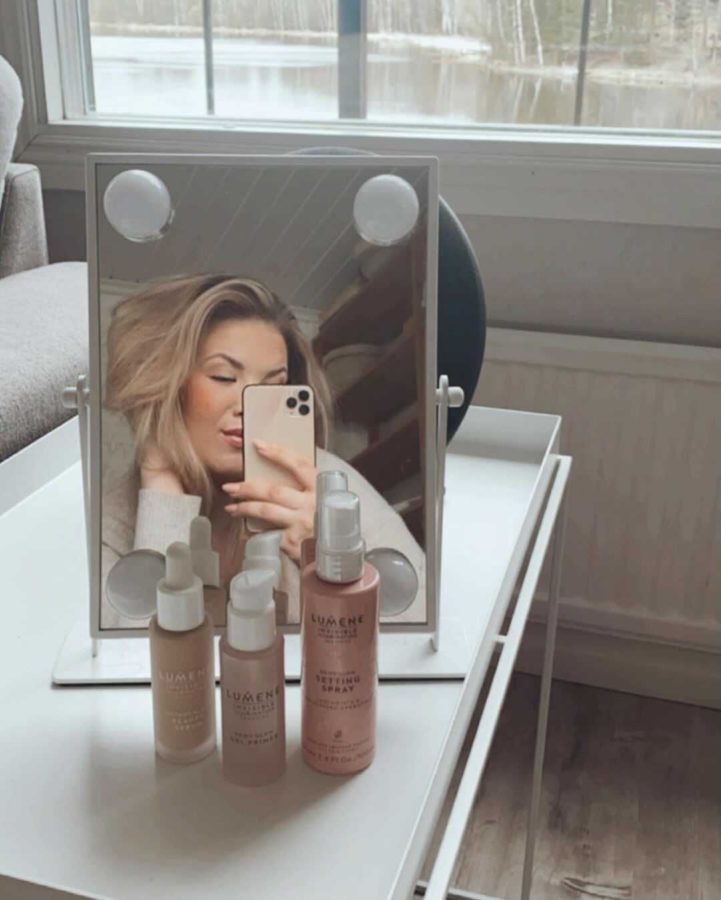
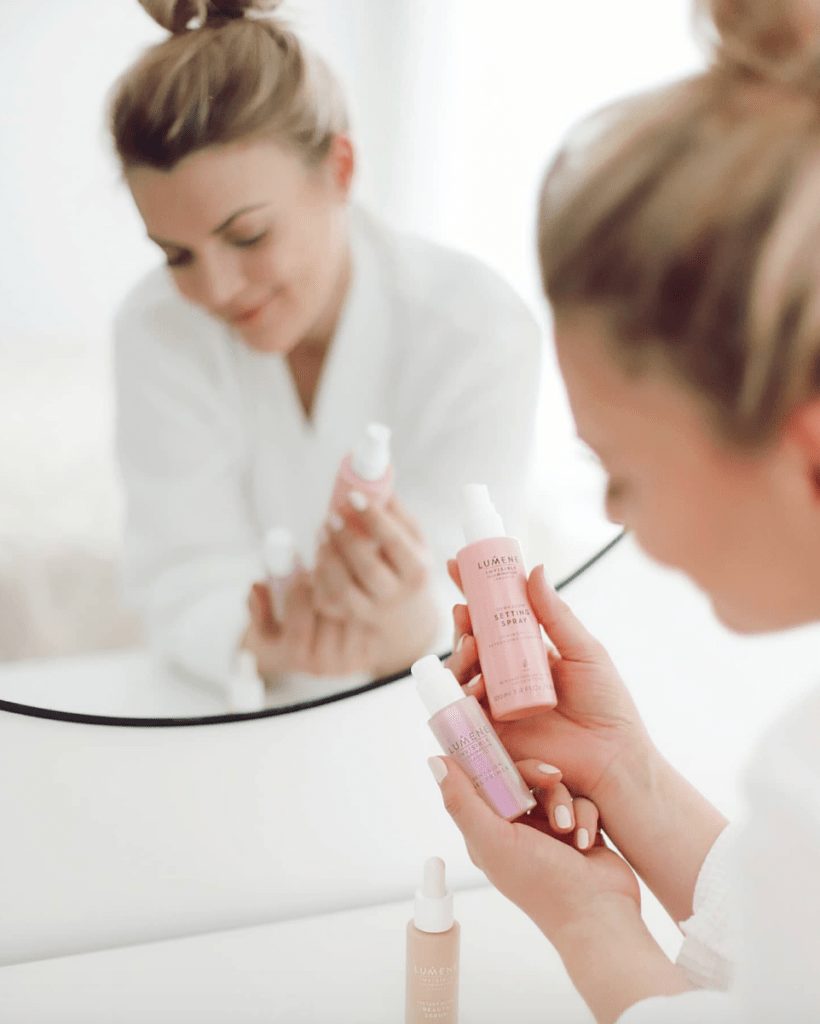
Lumene’s influencer campaigns’ content in Filand
Measurng influencer marketing success
The last and most important step of any (influencer) marketing campaign should be the analysis of the results: it can be used to determine how successful the campaign was, which content creators brought the desired results, and also to set the budget for the next campaign.
Measuring influencer marketing results primarily depends on the purpose of the campaign: if the goal is to increase brand awareness, you should mainly focus on the metrics related to the reach (reach, number of impressions). However, if the goal is to promote the brand image, then rather focus on the indicators related to the engagement: the number of likes and comments, engagement rate, the number of new followers, etc.
The most difficult thing is to measure the impact of influencer marketing on sales – this is also the main criticism in this area. In most cases, one of two options is used:
a) Trackable links that the influencer can add to his profile or Story. On Google Analytics, the brand can see how much traffic has come to the website via the influencer’s link, how many, and in what amount purchases have been made.
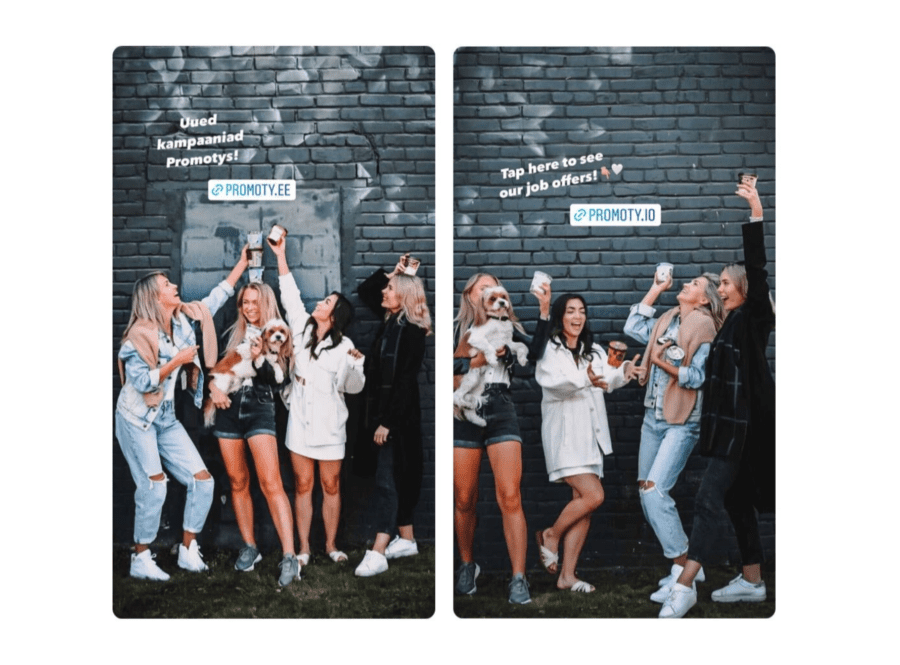
b) Personal discount codes that allow you to know exactly how many sales each collaboration brought. As the influencer can offer something to his followers in this case, it is a win-win solution.
In addition, it allows for more accurate metering than trackable links – even if a customer who sees the concrete campaign post goes to the online store from another device instead of the influencer’s shared link and makes a purchase, they’re likely to still use the code.
Summary: navigating influencer marketing for brand success
Influencer marketing can be an effective marketing and branding channel for a wide range of brands. However, running an effective influencer marketing campaign hinges on a strategic and well-thought-out approach.
Begin by clearly defining your campaign goals, whether it’s boosting brand awareness, driving website traffic, increasing sales, or engaging with a new audience. Thoroughly understand your target demographic to identify influencers whose followers align with your ideal customer profile.
Lastly, make sure to track and measure key performance indicators (KPIs) relevant to your goals, such as engagement rates, reach, conversions, and return on investment, and continuously analyze campaign results to refine future strategies. Good luck! 💜
